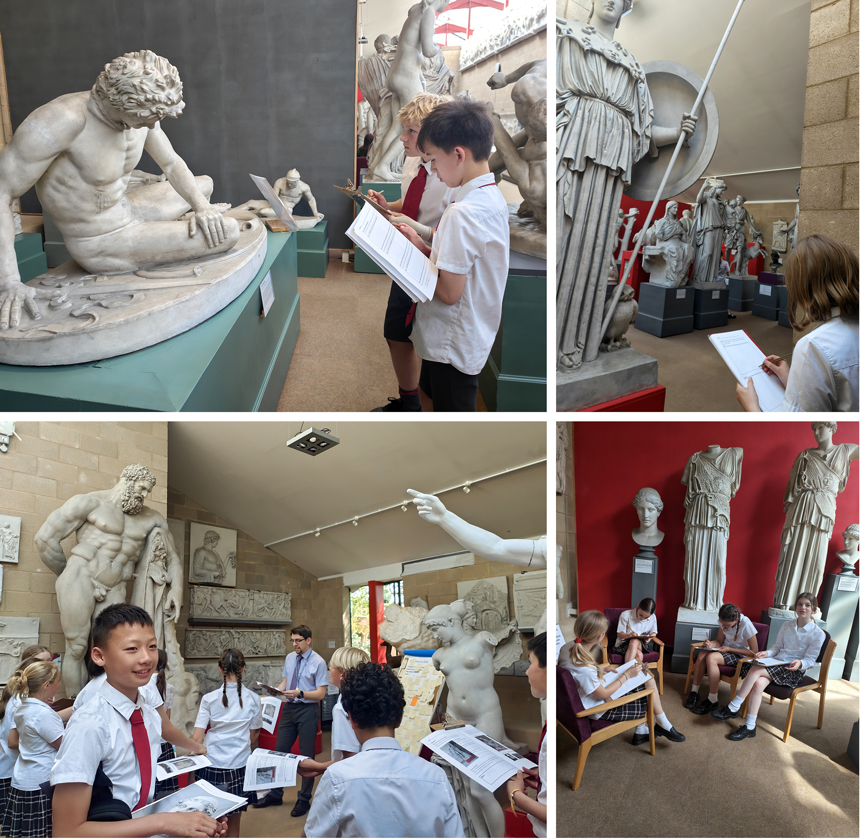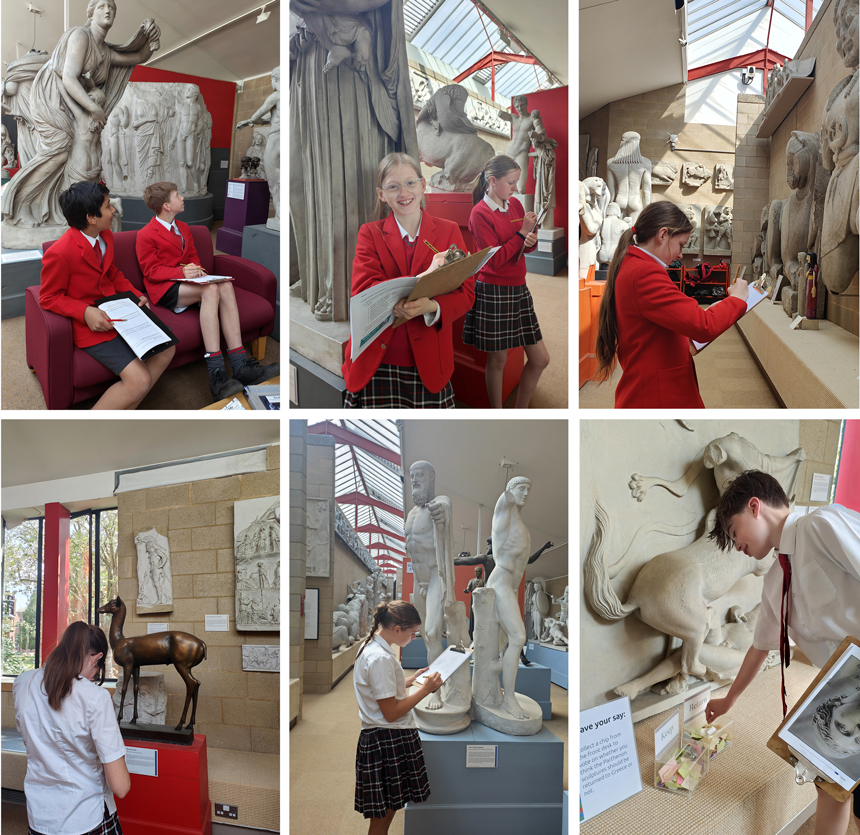Form 5 embarked on a fascinating journey through history during their recent visit to the Museum of Classical Archaeology in Cambridge. The Museum, home to one of the world’s largest plaster cast collections of ancient Greek and Roman sculpture, provided a unique opportunity for the children to deepen their understanding of mythology and classical civilizations—an essential part of their Latin studies in Forms 5 and 6.

As they walked among the lifelike plaster casts, the children engaged with replicas of some of the most famous sculptures from antiquity, from the imposing Laocoön and His Sons to the elegant Venus de Milo. These masterpieces, while casts rather than originals, offer an unparalleled insight into ancient artistry, symbolism, and storytelling, allowing pupils to examine the themes and characters that have shaped classical literature and mythology.
It’s incredible how the artists captured expressions and movement from thousands of years ago.

The visit was designed to complement the students’ Latin curriculum by bringing mythological tales to life. Seeing the representations of gods, heroes, and legendary figures firsthand helped reinforce their understanding of narratives they have studied, such as the Trojan War, the Olympian deities, and Roman civic ideals. Through interactive discussions and observational activities, pupils explored how sculptures served as a form of visual storytelling in ancient society.

Beyond mythology, Form 5 also considered the role of art in classical education, reflecting on how Roman and Greek societies used sculpture to convey power, virtue, and religious beliefs. The Museum’s collections provided a tangible connection to the artistic traditions that have influenced Western culture for centuries.
It was amazing to see the myths come to life in the sculptures. I never realised how much detail went into them—it made me understand the stories so much more.